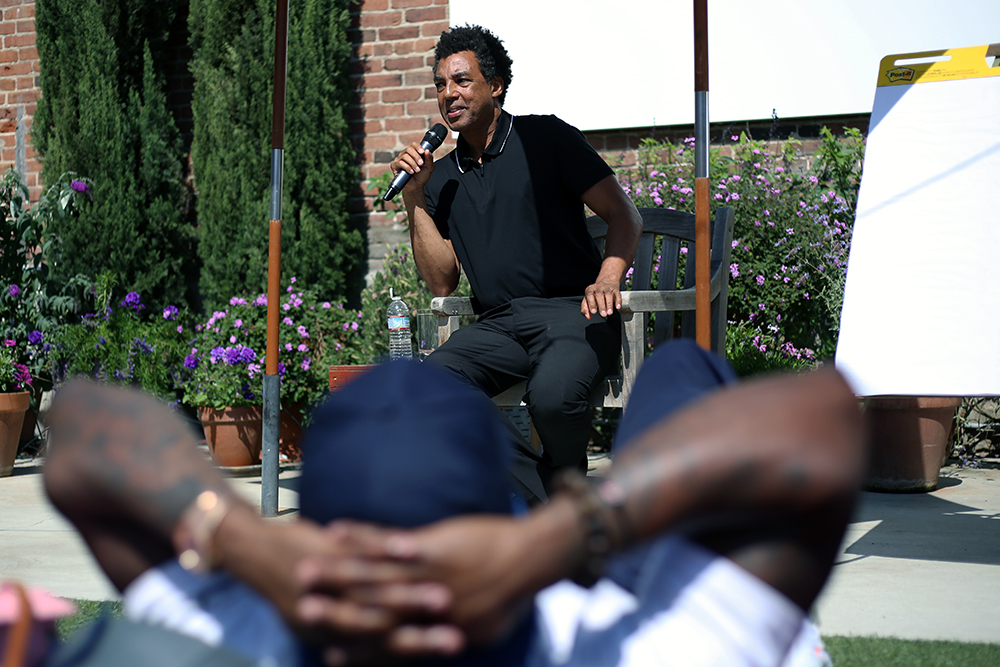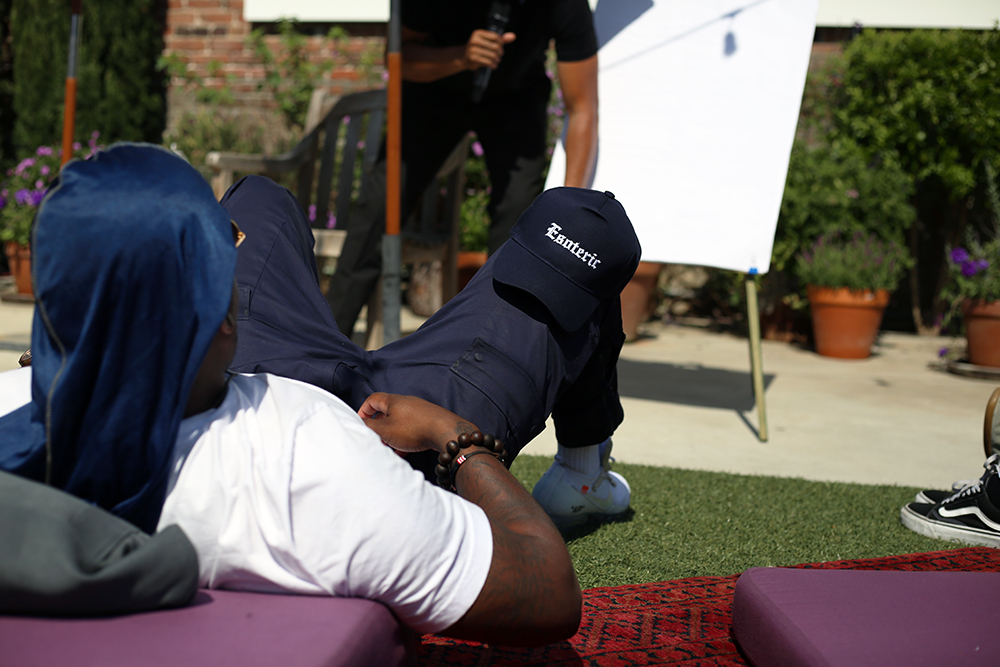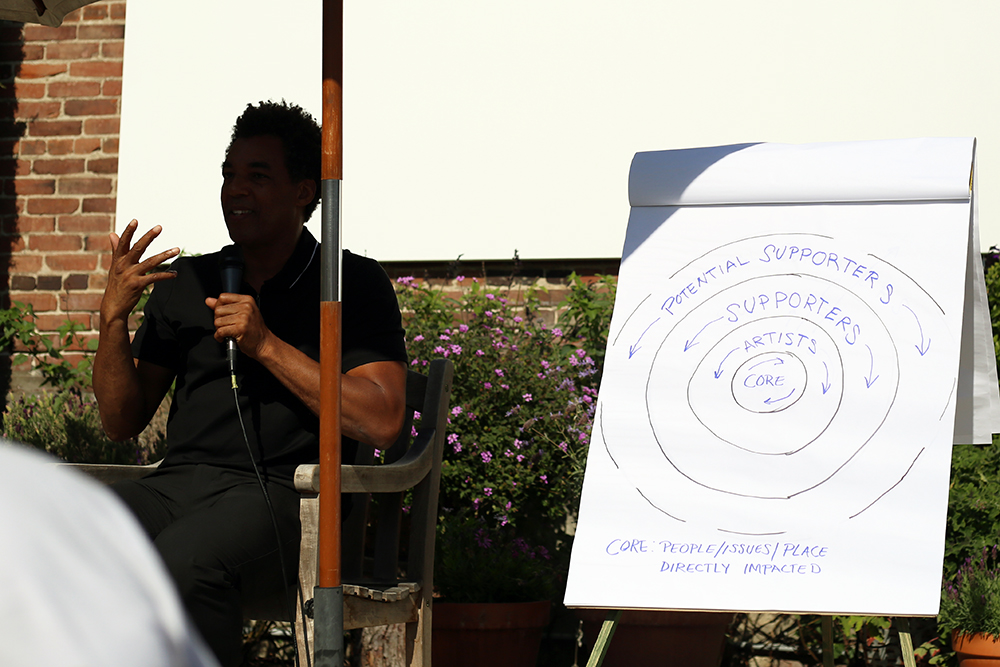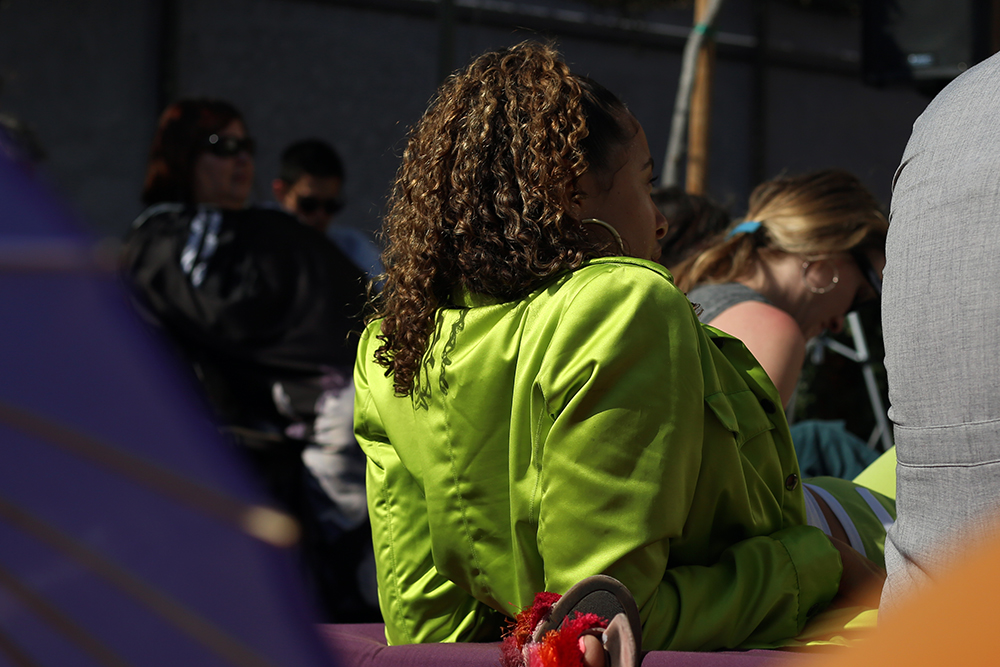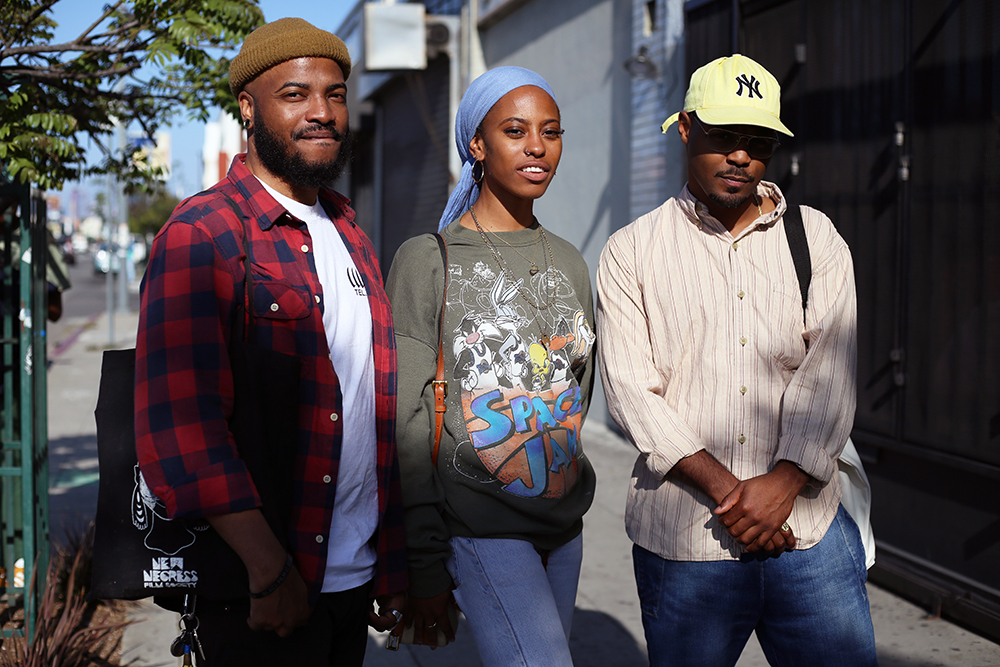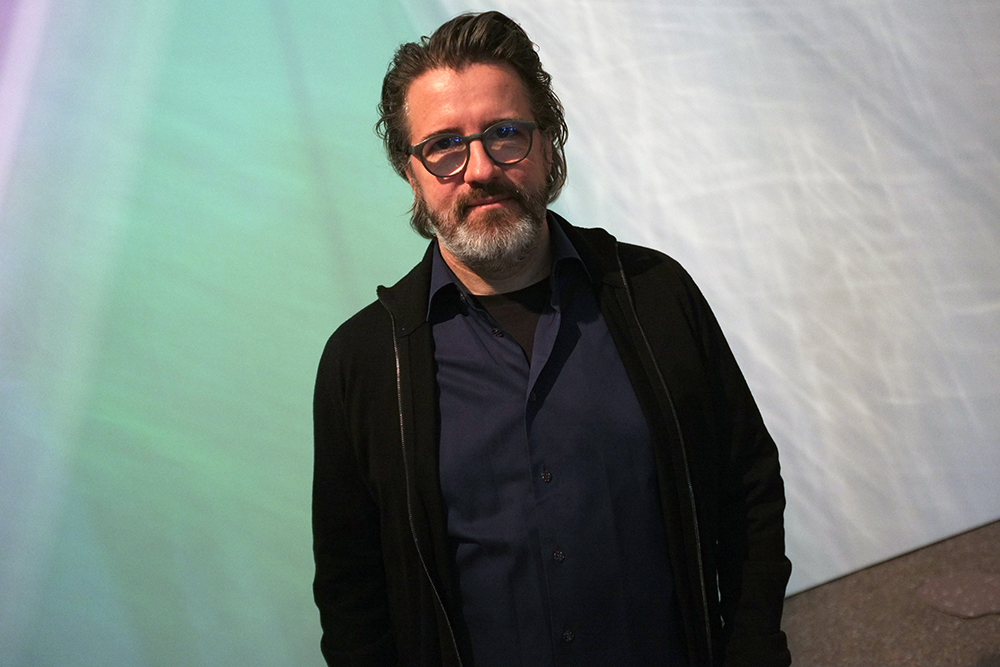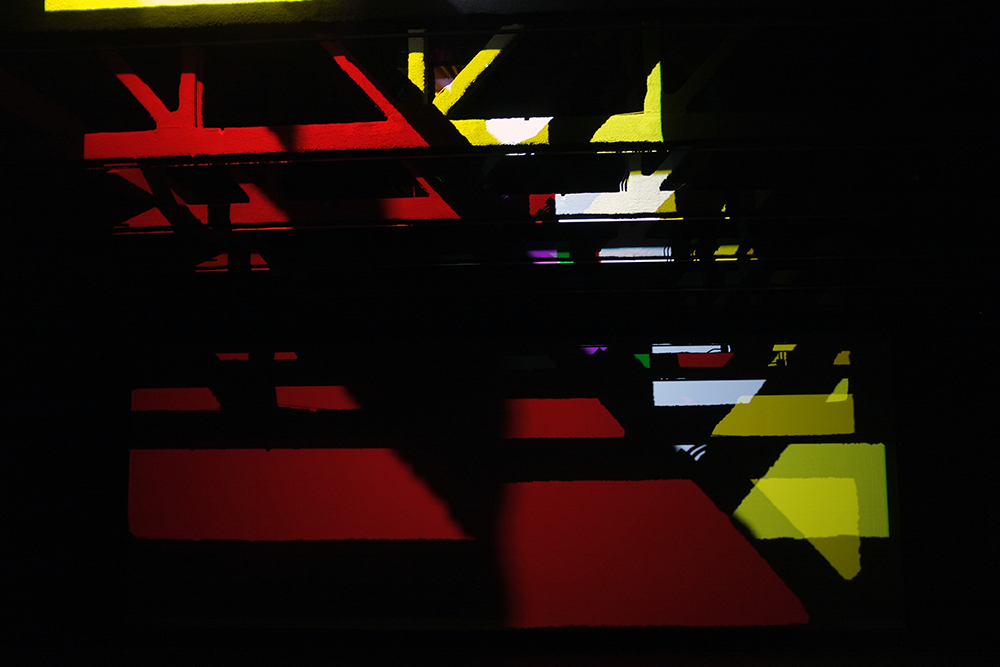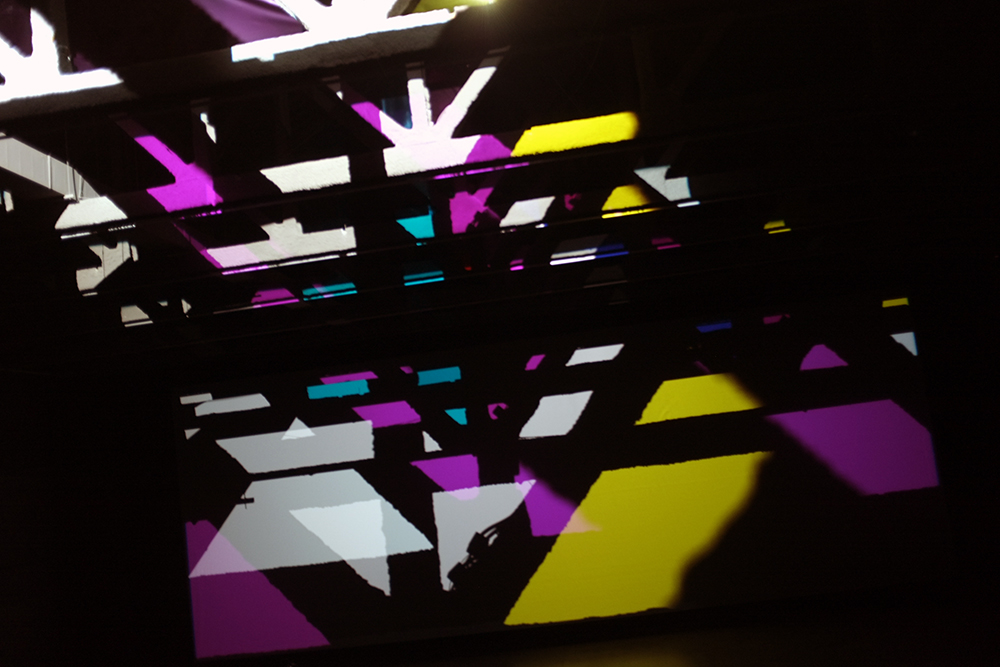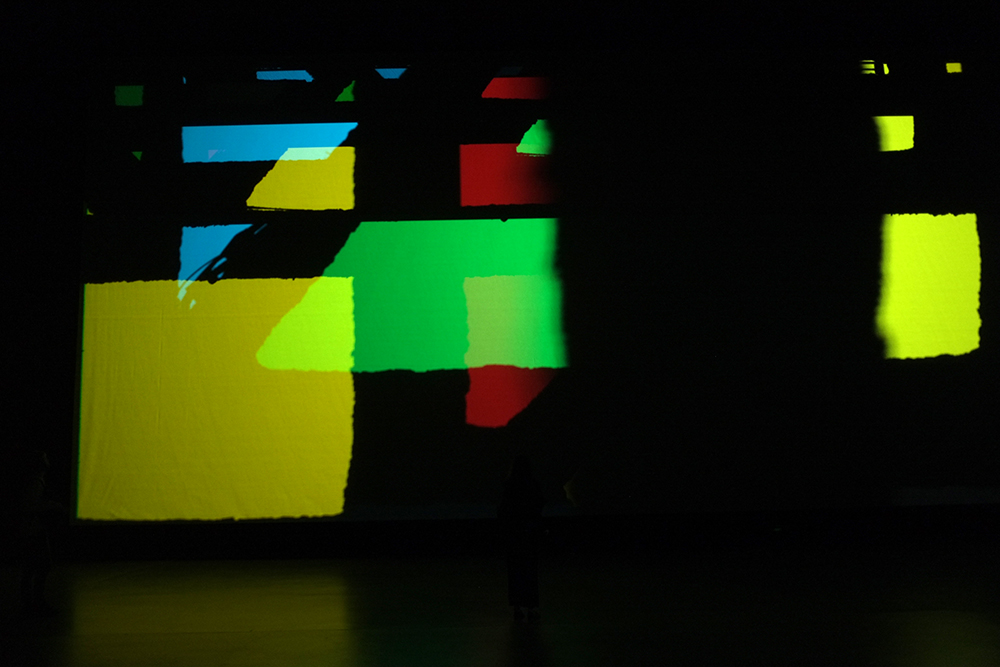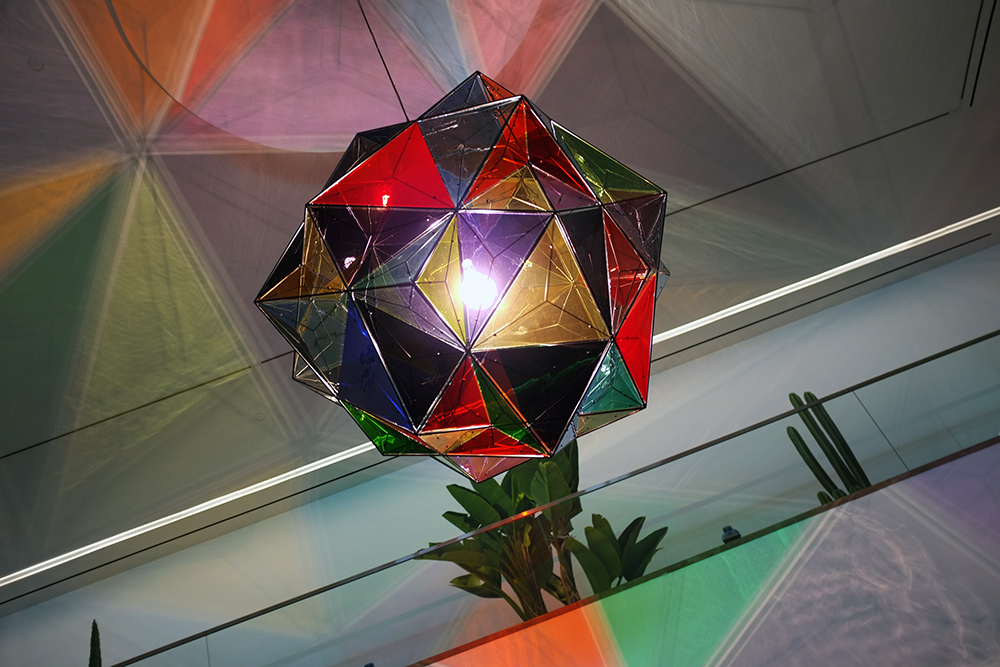The art world got a dose of hyper-digital club theater from the minds behind Team Rolfes and Club Cringe.
text by Karly Quadros
images by Janice Chung
There’s no getting around it: there’s a lot going on in Diskokina.
Drawing from the ‘more is more’ digital aesthetics that have mostly closely come to be associated with hyperpop – cyberpunk slickness, glitchy heaven-or-hell graphics, a sweet chirpy virtual companion named Kina – the show is one part club night, one part live theater, and one part mo-cap freak out. The brainchild of Team Rolfes and Club Cringe, the show – which features a rotating cast of musical guests and has previously included GFOTY, Frost Children, and umru – found its home in late night clubs and experimental music festivals across Europe, but last Wednesday at 8 pm the collective found themselves not in an industrial nightclub or a warehouse rave but the glittering glass atrium of WSA at 180 Maiden Lane in the heart of New York’s Financial District.
On June 4 and 5, Diskokina performed two nights of their immersive club theater for a mix of club kids and fine art lovers as the closing programming of a showcase for talent nurtured by the New Museum’s art and technology incubator NEW INC. The night was hosted by upbeat “AI” avatar Kina (voiced and performed by Maya Filmeridis whose facial expressions were captured in real time) and comedian Lauren Servideo. The show was a triptych of shorter narratives performed by 321 Rule featuring Team Rolfes and rapper Lil Mariko; Passage Live A/V by Kevin Parker He and DJ Bobby Beethoven; and Club Cringe featuring godmother of 2010s electroclash Uffie, Mother Cell, DJ Wallh4x, DJ Trick, and 502 Bad Gateway Studio.
“We had historically always been doing our work outside the art world, working in music or fashion, doing what we could because the art world in the US is fraught,” said Sam Rolfes, co-founder of Team Rolfes. “The stuff we wanted to do, working with musicians and combining all these different things, there wasn’t a support network for that. I think that this New Museum showcase is an important inflection point where that is starting to change.”
Rolfes, along with his brother and creative partner Andy, has been active in the music and fashion world for years, designing the album packaging for Lady Gaga’s Dawn of Chromatica and directing music videos for Gaga, PC Music OG Danny L Harle, cyborg pop producer Arca, and new wave innovator Danny Elfman. They’ve collaborated with brands like Nike, Dior, Louis Vuitton, and Kenzo, but their style is unmistakable. There’s an element of the digital uncanny and distortion, nods to early PlayStation graphics and gauche social media overdrive, but also a carnivalesque playfulness that hints at the queer potentiality of digital spaces.
Diskokina’s onstage vibe falls somewhere between a sweaty Gen Z club night and a competitive gaming tournament. The stage is flanked by computers and wires, exposing the hardware that goes into the cutting edge projections onscreen, which are generated in real-time from musical performers that are strapped into motion capture suits. Ultimately, the audience is seeing performers twice: once onstage and again in the world of the screen where coders manipulate their avatars in an act of VR puppetry. The onscreen narratives are, of course, dystopian: a far flung future where memories are the most valuable currency sought after by ruthless bounty hunters or maybe a suspiciously contemporary moment where AI aesthetics are everywhere and corporations are tracking your every move.
“Theater, narrative, music –the tech unites it. It’s very front and center because it’s experimental and wild, but what we’re really aiming for is the story, the sound, or the emotion,” said Rolfes.
Mixed reality performances shot into the public consciousness during Covid when lockdown orders threw the live music and theater worlds into a tailspin. Travis Scott held a record breaking mixed reality performance in Fortnight with over 27 million views, while Billie Eilish mounted similar largely digital performances. At the time, Meta was going all-in on virtual reality, but it was smaller artists like Panther Modern (aka Brady Keehn of Sextile) and Reggie Watts who were experimenting with the artistic potential of virtual club spaces. Even after in-person concerts and dancing resumed and the public’s interest turned elsewhere, the idea of AR and live performance has lingered whether it’s Rosalía’s heavily mediated Motomami stage show or Magdalena Bay’s live show promoting Mercurial World in which they and the audience teach an AI named Chaeri how to be human.
Rolfes points to even older inspirations though. Max Headroom, the “digital” news anchor from a British sci-fi TV film who satirized the commercialization of everyday life, seems to be an obvious inspiration. The fact that the character leapt out of the world of fiction and into commercials as an official spokesman for Coke only added to the reality warp (as did the first successful TV hack in late 1987 in which a full minute of a Chicago Dr. Who broadcast was interrupted by someone sporting a Max Headroom mask.) Rolfes said he hopes to bring the same kind of mischievously satirical energy to the NEW INC showcase.
After all, tech is a tool, neither positive nor negative, although it’s often caught up in the same whirlwinds of speculative capital that Diskokina so sharply satirizes. For Rolfes, it’s all about finding new ways to use it.
“It’s not just tech demos. There’s a real need to hack it, to do something beyond what Microsoft or whatever company designed the tool might’ve intended,” Rolfes said. For now, he and the rest of the Diskokina team will be jamming the signal, one show at a time.









